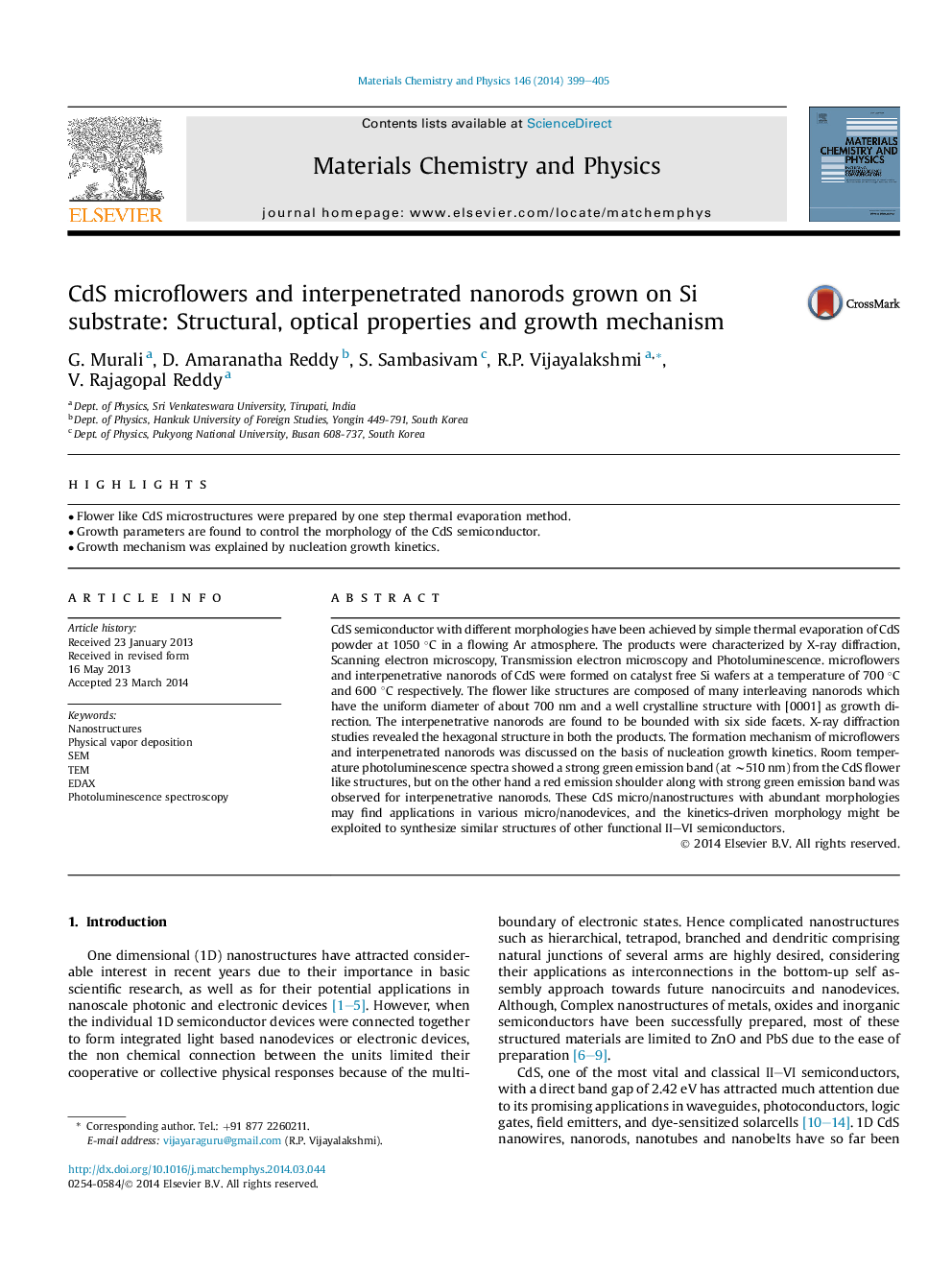| Article ID | Journal | Published Year | Pages | File Type |
|---|---|---|---|---|
| 1521678 | Materials Chemistry and Physics | 2014 | 7 Pages |
•Flower like CdS microstructures were prepared by one step thermal evaporation method.•Growth parameters are found to control the morphology of the CdS semiconductor.•Growth mechanism was explained by nucleation growth kinetics.
CdS semiconductor with different morphologies have been achieved by simple thermal evaporation of CdS powder at 1050 °C in a flowing Ar atmosphere. The products were characterized by X-ray diffraction, Scanning electron microscopy, Transmission electron microscopy and Photoluminescence. microflowers and interpenetrative nanorods of CdS were formed on catalyst free Si wafers at a temperature of 700 °C and 600 °C respectively. The flower like structures are composed of many interleaving nanorods which have the uniform diameter of about 700 nm and a well crystalline structure with [0001] as growth direction. The interpenetrative nanorods are found to be bounded with six side facets. X-ray diffraction studies revealed the hexagonal structure in both the products. The formation mechanism of microflowers and interpenetrated nanorods was discussed on the basis of nucleation growth kinetics. Room temperature photoluminescence spectra showed a strong green emission band (at ∼510 nm) from the CdS flower like structures, but on the other hand a red emission shoulder along with strong green emission band was observed for interpenetrative nanorods. These CdS micro/nanostructures with abundant morphologies may find applications in various micro/nanodevices, and the kinetics-driven morphology might be exploited to synthesize similar structures of other functional II–VI semiconductors.
